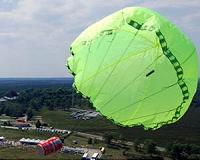 |
Sunnyvale CA (SPX) Aug 27, 2010 Lockheed Martin has congratulated the National Reconnaissance Office (NRO) and National Geospatial-Intelligence Agency (NGA) on the 50-year anniversary of the first Corona photo reconnaissance satellite image from space, which ushered in new space-based capabilities for the nation. First developed as a joint U.S. Air Force and Central Intelligence Agency program to provide surveillance from space of denied territories, Corona achieved mission success on August 18, 1960 when an Air Force C-119 aircraft recovered in mid-air the satellite's capsule containing imagery captured by the satellite's panoramic camera system. Corona, which had to surpass technical barriers never crossed before, served as a foundation program for the NRO. Launched into polar orbits by U.S. Air Force Thor boosters, the spacecraft flew at approximate altitudes of 100 nautical miles to take pictures of selected target areas. The exposed film, some 2.1 million feet, was returned to earth in capsules ejected from the satellites. The program flew 145 missions, producing more than 800,000 images critical to national security during its 12-year duration. Corona marked many 'firsts' in space history, including the first recovery of a manmade object (capsule) from space and the first Lockheed Martin satellite in space. The first image from Corona was 104 days after U2 flights were suspended over the former Soviet Union following the shoot down of Francis Gary Powers in May 1960. "The successes achieved by the Corona team were monumental in protecting our nation and advancing aerospace technology," said Joanne Maguire, executive vice president of Lockheed Martin Space Systems Company. "Having worked with our government partners on such a vitally important ground-breaking program is a source of tremendous pride for the team. Corona paved the way for far more sophisticated systems that today are providing unprecedented new capabilities for both government and commercial customers around the globe." Lockheed Martin heritage company, Lockheed Missiles and Space Company, was awarded the prime contract for the Corona program in 1956. Lockheed Martin served as technical advisor and integrator to all Corona equipment, except the Thor booster. Lockheed Martin developed the orbiting Agena upper stage; and integrated and led the test, launching and on-orbit control operations of the Corona satellites. The Lockheed Martin-built three-axis stabilized space vehicle, Agena, housed numerous electronics, including the thermally protected reentry capsule containing the satellite's camera and film. An example of the Corona camera and recovery capsule is on display at the National Air and Space Museum in Washington D.C.
Share This Article With Planet Earth
Related Links Lockheed Martin Space Technology News - Applications and Research
 Student Competition 'In The Can'
Student Competition 'In The Can'Paris, France (ESA) Aug 27, 2010 High school students from different ESA Member States were able to watch their own 'satellites' soar into the sky aboard suborbital rockets during the first European CanSat competition, held at the Andoya Rocket Range in Norway. The CanSat competition, organised by ESA's Education Office and the Norwegian Centre for Space-related Education (NAROM), was open to teams of at least four studen ... read more |
|
| The content herein, unless otherwise known to be public domain, are Copyright 1995-2010 - SpaceDaily. AFP and UPI Wire Stories are copyright Agence France-Presse and United Press International. ESA Portal Reports are copyright European Space Agency. All NASA sourced material is public domain. Additional copyrights may apply in whole or part to other bona fide parties. Advertising does not imply endorsement,agreement or approval of any opinions, statements or information provided by SpaceDaily on any Web page published or hosted by SpaceDaily. Privacy Statement |